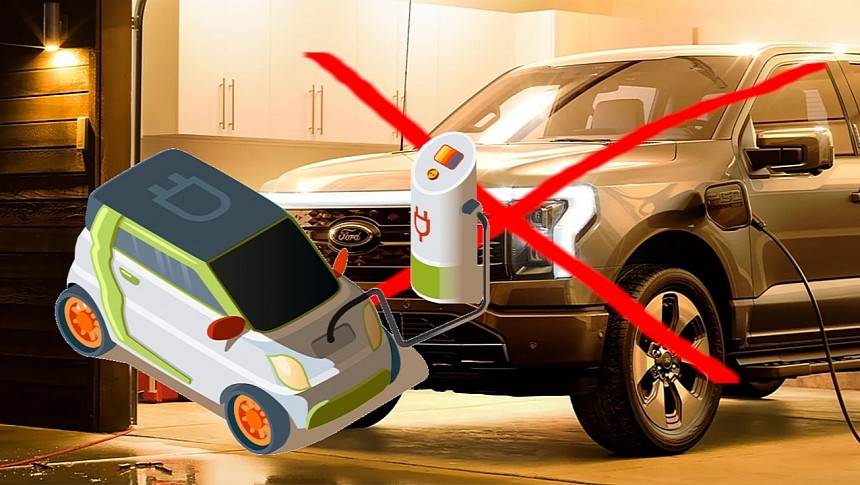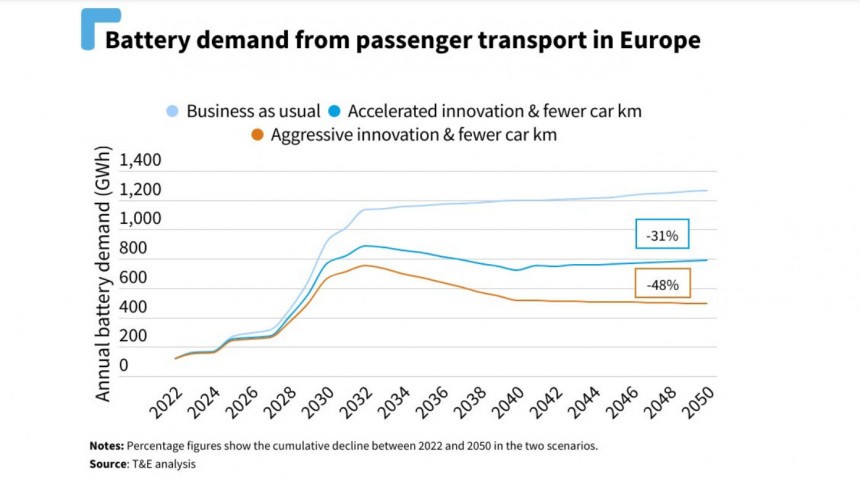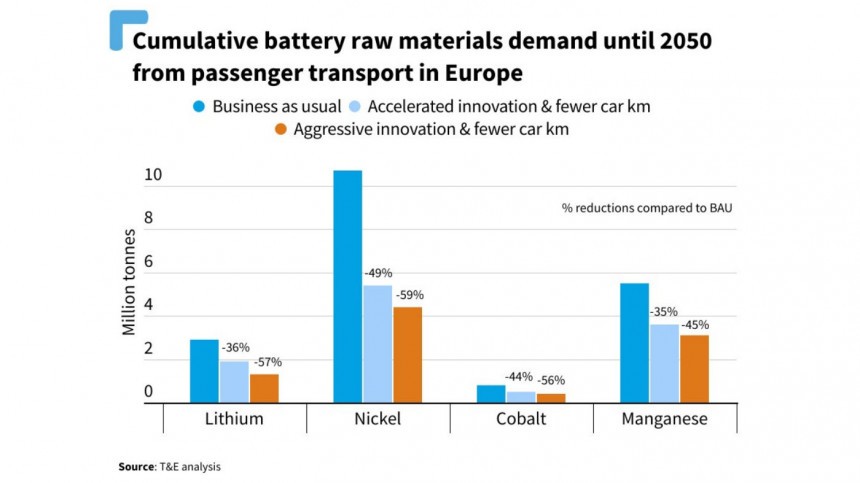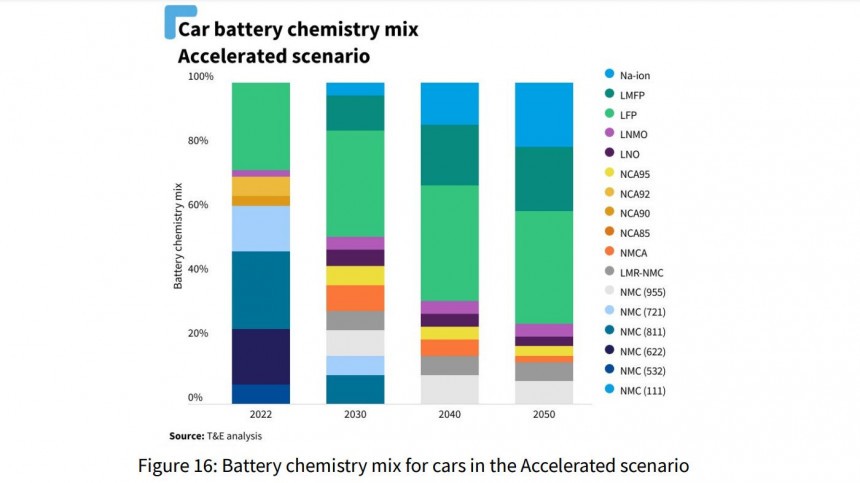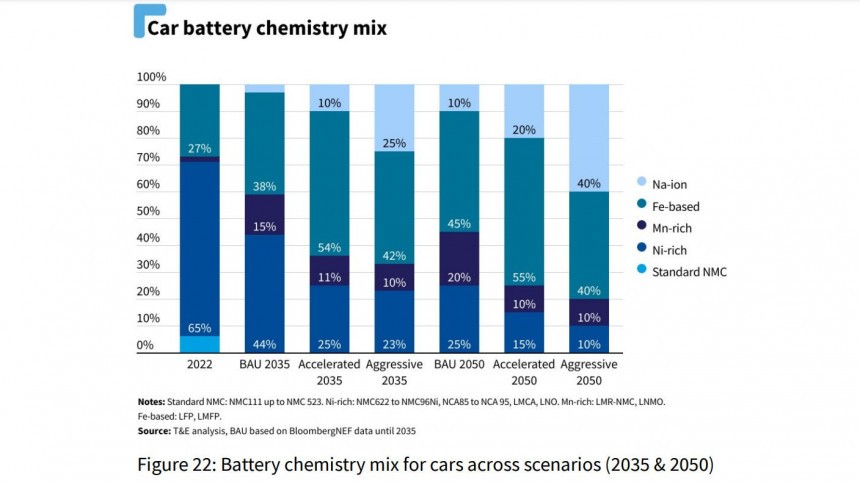I don't know about you, but in the last months, I noticed a flock of news and concerned social media commenters about the supply issues of critical raw materials needed for the batteries of electric cars. The popular wisdom is that Earth cannot provide all the resources we need for the "Electrify Everything" paradigm, so we'd better forget about EVs and embrace ICEVs, hybrids, and the future hydrogen-propelled cars.
I was a fool to think debunking batteries-related myths would stop the naysayers from coming up with new "ammunition." This time, the lithium, nickel, or cobalt penury looks like a severe challenge, especially since most car manufacturers and suppliers complain about it. And now, the countries holding the most significant deposits of such metals want to transform it into a geo-political blackmail strategy.
In the meantime, in case you didn't notice last decade's trend, the public favors bigger SUVs. For these to travel hundreds of miles per full charge, they require higher-capacity batteries than regular cars. As a result, bigger batteries require more materials. So, many analysts out there forecast supply shortages and support alternative mobility, which usually means fossil fuels-based solutions.
Well, the Transport & Environment NGO has another approach – at least for Europeans. How about using smaller electric cars instead of larger and heavier ones and relying on lower-capacity batteries with shorter-but-reasonable ranges? I know this is impossible for Americans, where the 19 feet (almost 6 meters) long Tesla Cybertruck or Ford F150 Lightning are just standard…
The 131-kWh capacity battery of Ford's electric pick-up weighs an astounding 1,800 pounds (0.8 tons). It needs a lot of critical materials, that's for sure. Depending on the chemistry, a 100-kWh battery contains more than 100 pounds / 45 kg of lithium, and around 200 pounds / 90 kg or more of cobalt and nickel, respectively.
Such a big battery can provide heavy trucks, like the more than 6,000 lbs / 2.7 tons electric F150, with around 300 miles / 480 km range, while a passenger car, like the less heavy Tesla Model S (5,100 lbs / 2.3 tons), can increase the range to around 370 miles / 600 km. Ford Mustang Mach-E RWD is 50% lighter than its big brother, and because of this, it gets almost the same range thanks to a 22% smaller capacity battery. The same goes for the smaller Tesla Model 3 Long Range: it's 20% lighter than its bigger sibling, but the 25% smaller capacity battery allows for a similar range.
You clearly see where I'm going with this. Of course,pissing against the wind contradicting the trend of larger and heavier SUVs will definitely not going to get me a popularity prize. But let me give you some numbers from the Transport & Environment study.
So, how many critical minerals do you think the EV fleet's batteries would require, assuming current technologies will still be in place at the time and ignoring the evolution to solid-state batteries? The correct answer is a lot (the following values are in million tons – Mt):
• 2.9 Mt of lithium
• 0.8 Mt of cobalt
• 5.5 Mt of manganese
• 10.7 Mt of nickel.
Note to the American public: these quantities could be used to make the batteries for around 50 million Teslas. By 2030, Tesla is expected to build at least 10 million cars annually. So, imagine that the quantities I mentioned before would be depleted only by Tesla in 4-5 years. This is to put things in context.
Regarding the Europeans, those quantities are 200 times more than the raw materials consumed by the European battery industry in 2022! It's a tremendous effort, and given all the warnings and concerns related to the supply chain and critical minerals availability, the probability for the plan of electrifying the transport will most likely be near zero. Unless policymakers, governments, and industry will take action.
T&E analysis suggests two scenarios as alternatives to the "business-as-usual" the car industry is following. The first one ("Accelerated Innovation and Fewer Car km" – or simply Accelerated scenario) could see a drop of 30% in demand for critical minerals, while the second one ("Aggressive Innovation and Fewer Car km" – or simply Aggressive scenario) would cut almost in half the needs.
As a result, compared to the "business-as-usual" scenario, the passenger distance traveled by car could decrease by 10% in 2040-2050, while the shift to public transport could increase by 12% in the same period. The car occupancy could increase by 10% in 2040-2050, which is to say share-riding and rent-a-car programs will contribute to less car ownership.
For those of you who are already outraged by this "dictatorship," I'm not done. T&E expects "weight-based vehicle taxation measures" so that people opt for smaller cars instead of "oversized, unsustainable, and pricey cars." Like SUVs or trucks – oops, did I offend any American out there?
This way, the average battery capacity could decrease from 68 kWh to around 50 kWh in 2050. This 25% reduction, combined with battery chemistry favoring lower critical minerals usage or even eliminating the need for some minerals (like the cobalt-free LFP technology, for instance), could see the need for only 19 TWh cumulative capacity in 2050.
This translates to a reduction of a third in raw materials demand, and the values are as follows:
• 1.9 Mt of lithium (30% less than in a business-as-usual scenario)
• 0.5 Mt of cobalt (45% less than in a business-as-usual scenario)
• 3.6 Mt of manganese (30% less than in a business-as-usual scenario)
• 5.4 Mt of nickel (almost 50% less than in a business-as-usual scenario)
Oddly, the T&E study doesn't emphasize the promising solid-state technology. Instead, it compliments the low-cost sodium-ion batteries, "which will soon be commercialized in China." Well, 2050 is still over two decades away, and battery development is swift. I suspect many pleasant surprises until then, but we'll have to wait. In the meantime, there's even a stricter scenario.
In the Aggressive scenario, the average battery capacity would decline from 68 kWh to only 40 kWh in 2050. What does it mean? For instance, the electric version of the Jeep Avenger has a 54-kWh lithium-ion battery and a maximum range of 240 miles / 400 km. It's absolutely natural to imagine that two decades from now, a similar or even more extended range will be achievable with a 40-kWh battery or even less. Even considering that nowadays chemistry wouldn't change much – although I bet it will.
I mean, just look at the facts: the 30-kWh battery of the first-generation Nissan Leaf was good for a 105 miles / 170 km range, while the second generation's 40-kWh battery (a 25% increased capacity) allowed for a 60% longer range of 175 miles / 280 km. This evolution took only two years! So a Leaf-sized compact EV with a 40-kWh battery will probably have a range of at least 300 miles / 480 km.
Compared to the business-as-usual scenario, the Aggressive scenario could see a 48% reduction in raw materials demand. Or the need for only 13 TWh of cumulative battery capacity. This way, the European demand for lithium and nickel would decrease from 11% to less than 4% from the known global reserves. This has a tremendous economic impact and also benefits related to reducing the pollution from sourcing these critical minerals.
One thing is for sure: in order to reduce the dependence on critical materials, Europe must stop following the trend of bigger and heavier cars with bigger batteries. Which is feasible technologically, but the real challenge is to make people understand the real benefits of such a paradigm shift. Maybe it's time for the car industry to also shift the focus from unsustainable profitability to a just-for-all business model.
Longer range for bigger cars implies bigger batteries and more resources
There is a war out there – besides the horrible one started by the Russian dictator against Ukraine. I'm discussing the fierce competition between car manufacturers regarding the EV range. The public is asking for more range from electric cars, on par with internal combustion engine cars. As if all the drivers out there travel hundreds of miles every day on their daily home-to-work commute.In the meantime, in case you didn't notice last decade's trend, the public favors bigger SUVs. For these to travel hundreds of miles per full charge, they require higher-capacity batteries than regular cars. As a result, bigger batteries require more materials. So, many analysts out there forecast supply shortages and support alternative mobility, which usually means fossil fuels-based solutions.
Well, the Transport & Environment NGO has another approach – at least for Europeans. How about using smaller electric cars instead of larger and heavier ones and relying on lower-capacity batteries with shorter-but-reasonable ranges? I know this is impossible for Americans, where the 19 feet (almost 6 meters) long Tesla Cybertruck or Ford F150 Lightning are just standard…
Such a big battery can provide heavy trucks, like the more than 6,000 lbs / 2.7 tons electric F150, with around 300 miles / 480 km range, while a passenger car, like the less heavy Tesla Model S (5,100 lbs / 2.3 tons), can increase the range to around 370 miles / 600 km. Ford Mustang Mach-E RWD is 50% lighter than its big brother, and because of this, it gets almost the same range thanks to a 22% smaller capacity battery. The same goes for the smaller Tesla Model 3 Long Range: it's 20% lighter than its bigger sibling, but the 25% smaller capacity battery allows for a similar range.
You clearly see where I'm going with this. Of course,
The hunger for critical minerals will be tremendous
According to T&E, electrifying passenger transport in the European Union will require 27 TWh of batteries by 2050 – if all the new cars sold at the half of the century will be electric. Although the EU wanted to phase out internal combustion engines on the new cars sold from 2035, maybe you heard that Germany and others still want ICEVs running on synthetic fuels. But their share will probably be insignificant, so we'll discuss the 100% EV scenario.So, how many critical minerals do you think the EV fleet's batteries would require, assuming current technologies will still be in place at the time and ignoring the evolution to solid-state batteries? The correct answer is a lot (the following values are in million tons – Mt):
• 2.9 Mt of lithium
• 0.8 Mt of cobalt
• 5.5 Mt of manganese
• 10.7 Mt of nickel.
Note to the American public: these quantities could be used to make the batteries for around 50 million Teslas. By 2030, Tesla is expected to build at least 10 million cars annually. So, imagine that the quantities I mentioned before would be depleted only by Tesla in 4-5 years. This is to put things in context.
Regarding the Europeans, those quantities are 200 times more than the raw materials consumed by the European battery industry in 2022! It's a tremendous effort, and given all the warnings and concerns related to the supply chain and critical minerals availability, the probability for the plan of electrifying the transport will most likely be near zero. Unless policymakers, governments, and industry will take action.
What's the toll?
Maybe you've noticed the "Fewer Car km" syntagm. This is to say that T&E's study starts from the premise that policymakers will enact "stricter urban planning and car use measures." In other words, unpopular measures for what people nowadays are used to, like distance-based charges, congestion charges, parking pricing, speed limits, or even prohibition in some city areas.As a result, compared to the "business-as-usual" scenario, the passenger distance traveled by car could decrease by 10% in 2040-2050, while the shift to public transport could increase by 12% in the same period. The car occupancy could increase by 10% in 2040-2050, which is to say share-riding and rent-a-car programs will contribute to less car ownership.
For those of you who are already outraged by this "dictatorship," I'm not done. T&E expects "weight-based vehicle taxation measures" so that people opt for smaller cars instead of "oversized, unsustainable, and pricey cars." Like SUVs or trucks – oops, did I offend any American out there?
This translates to a reduction of a third in raw materials demand, and the values are as follows:
• 1.9 Mt of lithium (30% less than in a business-as-usual scenario)
• 0.5 Mt of cobalt (45% less than in a business-as-usual scenario)
• 3.6 Mt of manganese (30% less than in a business-as-usual scenario)
• 5.4 Mt of nickel (almost 50% less than in a business-as-usual scenario)
Oddly, the T&E study doesn't emphasize the promising solid-state technology. Instead, it compliments the low-cost sodium-ion batteries, "which will soon be commercialized in China." Well, 2050 is still over two decades away, and battery development is swift. I suspect many pleasant surprises until then, but we'll have to wait. In the meantime, there's even a stricter scenario.
Aggressive innovation is simply too radical
According to the T&E study, this scenario "would require radical policies, including bans and scrappage of private cars to ensure less private car travel." I'm sure by now, both petrolheads and electroheads would like to burn me like a witch – but hey, don't shoot the messenger! After all, these are just scenarios.In the Aggressive scenario, the average battery capacity would decline from 68 kWh to only 40 kWh in 2050. What does it mean? For instance, the electric version of the Jeep Avenger has a 54-kWh lithium-ion battery and a maximum range of 240 miles / 400 km. It's absolutely natural to imagine that two decades from now, a similar or even more extended range will be achievable with a 40-kWh battery or even less. Even considering that nowadays chemistry wouldn't change much – although I bet it will.
Compared to the business-as-usual scenario, the Aggressive scenario could see a 48% reduction in raw materials demand. Or the need for only 13 TWh of cumulative battery capacity. This way, the European demand for lithium and nickel would decrease from 11% to less than 4% from the known global reserves. This has a tremendous economic impact and also benefits related to reducing the pollution from sourcing these critical minerals.
One thing is for sure: in order to reduce the dependence on critical materials, Europe must stop following the trend of bigger and heavier cars with bigger batteries. Which is feasible technologically, but the real challenge is to make people understand the real benefits of such a paradigm shift. Maybe it's time for the car industry to also shift the focus from unsustainable profitability to a just-for-all business model.
